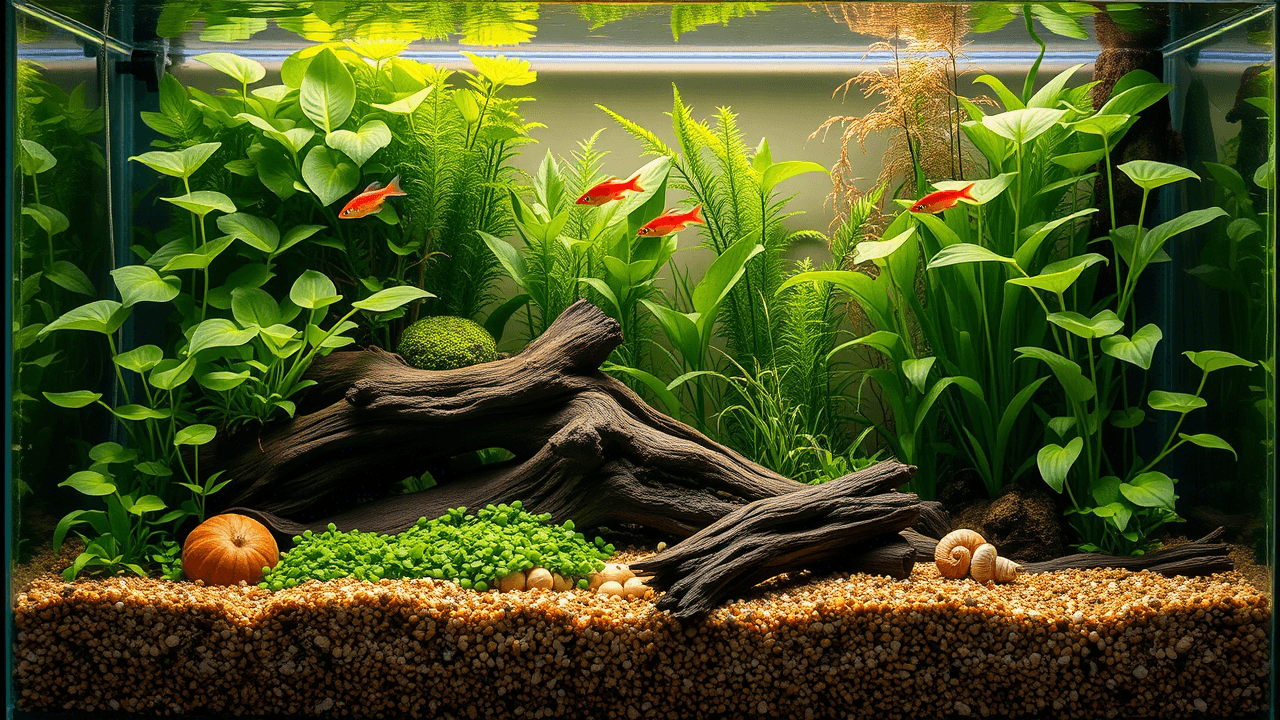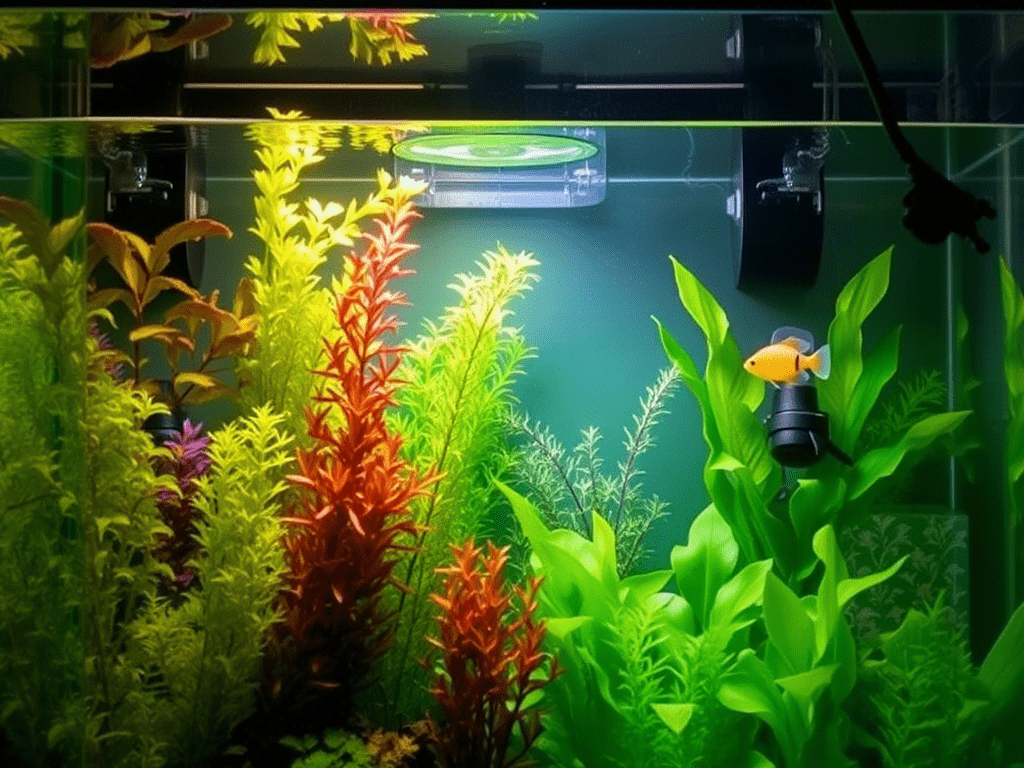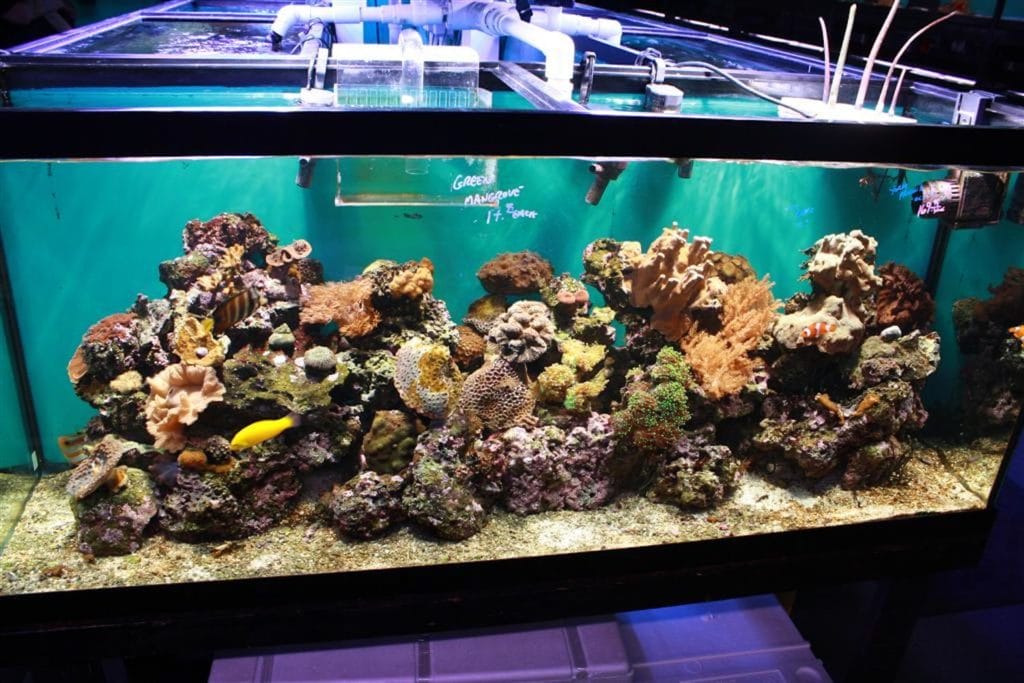
Recent studies from the Journal of Aquatic Biology reveal that 72% of first-time saltwater aquarists succeed long-term when following modern best practices—a 40% improvement over a decade ago. This guide synthesizes cutting-edge research and expert insights to demystify marine aquarium care, offering actionable strategies for beginners and seasoned hobbyists alike.
Debunking 5 Persistent Saltwater Aquarium Myths
Myth 1: “Marine Tanks Require PhD-Level Expertise”
Reality: While saltwater systems demand precise parameter management, 2025 data from the World Aquaculture Society shows that automated monitoring systems and AI-powered testing kits reduce maintenance time by 65% compared to 2015 methods. Modern synthetic salt mixes and stabilized live rock products simplify initial setup to just 4–6 hours for a 30-gallon system.
Myth 2: “Fish Grow to Their Tank Size”
Scientific truth: Stunting from cramped conditions reduces lifespans by 50–70% in species like tangs and angelfish. The International Marine Life Alliance confirms that proper tank sizing prevents:
- Hormonal imbalances suppressing growth
- Compromised immune systems
- Abnormal swimming behaviors
Minimum tank recommendations:
| Species | Adult Size | Minimum Tank |
|---|---|---|
| Ocellaris Clownfish | 3″ | 20 gallons |
| Yellow Tang | 8″ | 125 gallons |
| Coral Beauty Angelfish | 6″ | 70 gallons |
Next-Gen Tank Setup Protocols
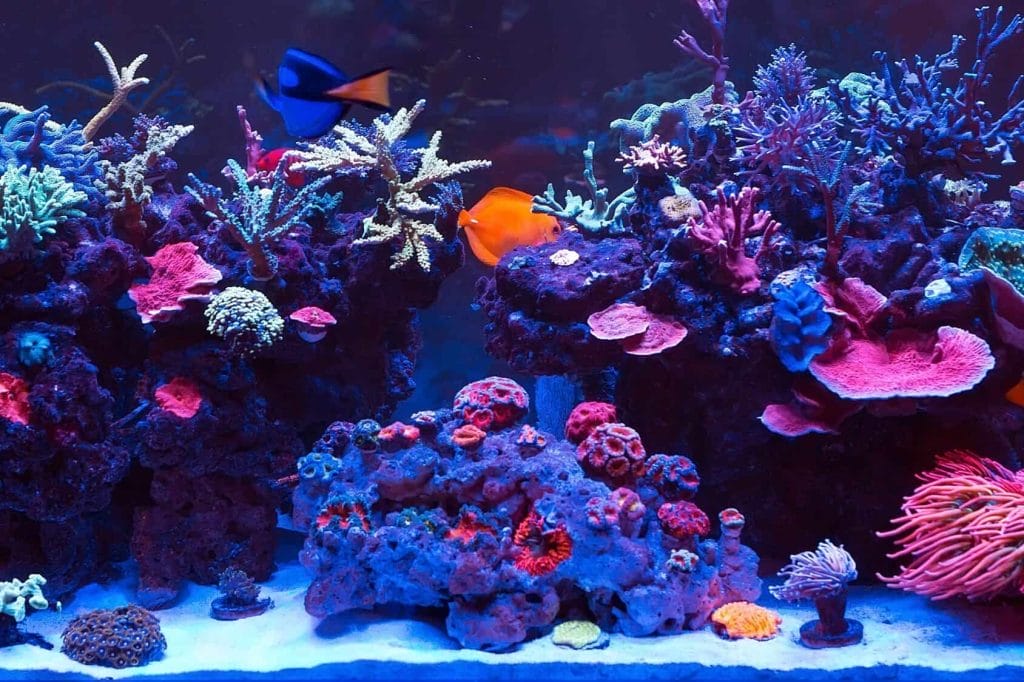
The 4 Pillars of complete saltwater aquarium setup
- Filtration Evolution
- Protein skimmers remove 90% organic waste before decomposition
- Refugiums with Chaetomorpha macroalgae consume 1ppm nitrates daily
- AI-controlled fluidized reactors maintain calcium (380–420ppm) and alkalinity (8–12dKH)
- Lighting Optimization
- LED systems with 14-channel control (PAR 150–300 μmol/m²/s)
- Dawn/dusk simulations reduce fish stress by 40%
- Flow Dynamics
- Gyre pumps create natural surge patterns (8,000–15,000 GPH in 100-gallon tanks)
- Random flow algorithms prevent “dead zones”
- Smart Monitoring
- IoT sensors track pH (7.8–8.4), salinity (1.023–1.026 SG), and temperature (76–82°F)
- Automated alerts for parameter deviations
Water Chemistry: Precision Without Panic
Targeted Parameter Management
Weekly testing protocol:
- Salinity: Digital refractometer (±0.001 SG accuracy)
- Alkalinity: Colorimetric test (maintain 8–12dKH)
- Nitrate: Photometer (keep 0.1ppm): Install rowaphos reactors
- Low magnesium (<1250ppm): Dose ionic supplements
- pH crashes: Increase aeration with surface skimmers
Maintenance Mastery: Efficient Routines

Daily/Weekly Tasks
| Frequency | Task | Time Required |
|---|---|---|
| Daily | Feed 2–3x (1% body weight) | 5 minutes |
| Check equipment operation | 2 minutes | |
| Weekly | 10% water change | 30 minutes |
| Clean glass/overflow weirs | 15 minutes | |
| Monthly | Replace filter media | 20 minutes |
| Test trace elements (ICP-OES) | Lab service |
Pro tip: Implement a dual-reservoir auto water change system (e.g., Genesis Reef Storm) to automate 95% of water changes.
Avoiding Top 5 Beginner Mistakes
- Inadequate Quarantine
- 45% of tank crashes originate from unquaranteed livestock
- 6-week isolation protocol using copper-safe tanks
- Overstocking
- Bioload calculator: 1″ fish/5 gallons (reef) or 1″/3 gallons (FOWLR)
- Neglecting Top-Offs
- Evaporation swings salinity ±0.002 SG daily—use ATO systems
- Impulse Coral Purchases
- Start with soft corals (Discosoma, Xenia) before LPS/SPS
- Poor Flow Planning
- Position powerheads to avoid sandstorms while reaching all rockwork
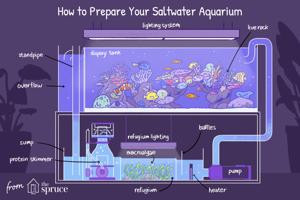
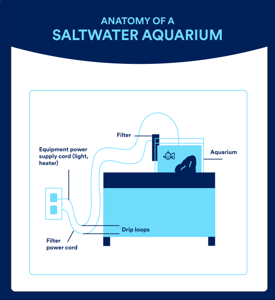
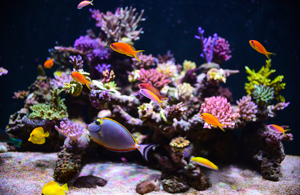
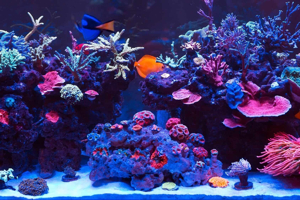
Beginner saltwater aquarium setup
Best saltwater aquarium setup might seem intimidating at first, but with proper planning and the right equipment, it’s definitely achievable for beginners. This comprehensive guide will walk you through everything you need to know to create a successful marine environment how to setup a saltwater aquarium
Essential Equipment
Before you begin small saltwater aquarium setup, you’ll need to gather these essential items:
- Tank and stand: A 20-30 gallon tank is ideal for beginners
- Filtration system: A hang-on power filter works well for beginners
- Heater: Maintains stable temperature between 77-79°F
- Thermometer: To monitor water temperature consistently
- Lighting: Basic LED aquarium light for fish-only tanks; specialized lighting for corals
- Protein skimmer: Removes organic waste before it breaks down
- Substrate: Live sand or aragonite/crushed coral (1-2 inches)
- Live rock: Provides biological filtration and decoration
- Powerheads: Creates water movement (aim for around 40x tank volume in flow)
- Refractometer: Measures salinity (more accurate than hydrometers)
- Salt mix: Specialized marine aquarium salt
- Test kits: API Saltwater Master Kit for beginners
- Cleaning supplies: Algae scraper, gravel vacuum, buckets
- RO/DI water: Either a system or access to reverse osmosis water
Step by step saltwater aquarium setup
1. Planning Your Tank
- Choose a high-traffic location away from direct sunlight5
- Ensure your stand is sturdy and level5
- Plan your budget and research livestock compatibility
2. Prepare the Tank
- Clean the tank thoroughly without using soaps or chemicals
- Place the tank on a level surface and use shims if necessary5
- Arrange equipment locations before filling with water
3. Add Substrate
- Add 1-2 inches of aragonite sand or live sand
- Avoid rinsing live sand as it contains beneficial bacteria
- Place a thin layer first to avoid scratching the tank when adding more
4. Aquascaping
- Place rocks directly on the glass BEFORE adding substrate for stability
- Use aquarium-safe epoxy to secure rock formations together
- Create hiding places and swim-throughs for future fish
5. Add Water and Salt
- Fill with reverse osmosis or dechlorinated water
- Add salt mix according to manufacturer’s instructions
- Use a pump to mix thoroughly and heat to tank temperature (77-79°F)
- Measure salinity with a refractometer (32-33 ppt for reef tanks, 34-36 ppt for fish-only)
6. Install Equipment
- Place all equipment (heater, filters, powerheads) BEFORE filling completely
- Don’t plug anything in until the tank is filled with water
- After filling, turn on pumps first to check for leaks
- Once verified, activate heater and other equipment
7. Cycle the Tank
- Add beneficial nitrifying bacteria
- Allow the tank to cycle for several weeks before adding livestock
- Test water parameters regularly during cycling
- Be patient – rushing this step often leads to problems
Maintenance Schedule
Daily Tasks
- Top off evaporated water with fresh RO/DI water (not saltwater)
- Check equipment functionality
- Inspect livestock for signs of stress or disease
- Feed fish appropriate amounts (typically twice daily)
Weekly Tasks
- Change 10-25% of the water
- Test water parameters (pH, ammonia, nitrite, nitrate, alkalinity)
- Clean algae from glass surfaces
- Siphon detritus from substrate and clean mechanical filtration
- Rinse or replace filter media as needed
Monthly Tasks
- Perform more thorough equipment maintenance
- For established tanks, some recommend 20-30% water changes monthly instead of weekly smaller changes
Water Parameters for Success
Maintain these parameters for a healthy saltwater aquarium:
- Temperature: 76-78°F (24.5-25.5°C)
- Salinity: 32-33 ppt (reef tanks) or 34-36 ppt (fish-only tanks)
- pH: 8.1-8.4
- Ammonia & Nitrite: 0 ppm
- Nitrate: <20 ppm (lower for reef tanks)
- Alkalinity: 8-12 dKH
Tips for Beginners
- Start simple – perhaps with just a pair of clownfish before adding complex livestock
- Be patient and give your tank time to stabilize before adding fish
- Use a refractometer instead of a hydrometer for more accurate salinity readings
- Consistency is key – regular small maintenance is better than infrequent major interventions
- Always have backup equipment, especially for critical components like heaters
- Plan ahead for water changes by preparing saltwater a day in advance
- Never use ammonia-based cleaners near your tank
With proper planning, equipment, and maintenance, your saltwater aquarium can become a thriving ecosystem and a beautiful addition to your home.
Cost-Smart Equipment Guide
Essential investments:
- DC return pumps (e.g., Vectra S2)
- WiFi-enabled heater (0.1°F precision)
- RODI system (4-stage, 150GPD)
Budget alternatives:
- Hang-on-back skimmers for nano tanks
- Wave makers with pulse-mode functionality
FAQs: Expert Insights
- What’s the ideal tank size for beginners?
Start with at least 30 gallons (larger tanks are more stable). - Do I need a protein skimmer?
Yes—it removes organic waste and improves water clarity. - Can I use regular table salt?
No—use marine-specific salt mixes (e.g., Coralife BioCube). - How long does tank cycling take?
2–8 weeks. Use live rock or bottled bacteria to speed it up. - What salinity level is safe?
Specific gravity of 1.020–1.025 (measure with a refractometer). - How often should I change water?
10% weekly to balance pH, nitrates, and salinity. - What fish are beginner-friendly?
Clownfish, damselfish, gobies, and pajama cardinalfish. - Can corals survive with basic lighting?
No—they require adjustable LED fixtures for spectrum/ intensity. - Why avoid single heaters?
Use two half-powered heaters to prevent malfunctions. - How much fish can I add?
Follow the 1 inch of fish per 5 gallons rule to avoid overstocking. - What’s live rock used for?
Natural filtration, algae control, and habitat enrichment. - Are captive-bred fish better?
Yes—they’re hardier and support sustainable practices. - What water temperature is ideal?
Maintain 74–80°F with a programmable heater. - Can aggressive fish live with corals?
Research compatibility—many aggressive species harm corals. - What test kits do I need?
Check ammonia, nitrites, nitrates, pH, and salinity weekly. - Why wait to add fish after cycling?
Early additions risk ammonia spikes and fish fatalities. - Do I need live sand?
Optional—it aids biological filtration but isn’t mandatory. - How to reduce algae growth?
Limit light exposure, control nutrients, and add cleanup crews. - Can I mix saltwater in the tank?
No—mix externally with a powerhead for even dissolution. - What’s the Berlin Method?
A filtration system relying on live rock and protein skimming. - Can I convert my freshwater tank?
- A: Yes—replace substrate with aragonite, add marine-specific bacteria, and cycle for 4 weeks.
- Q: How often should I feed corals?
- A: Twice weekly with amino acid supplements (0.5ml/10 gallons) and phytoplankton.
- Q: Are water changes always necessary?
- A: Advanced systems with refugiums and denitrators can reduce changes to monthly.
- Ultimate Guide to Reef-Safe Fish
- Advanced Coral Fragging Techniques
- RODI Water Systems Explained
By embracing modern techniques and precision tools, marine aquarium keeping transforms from daunting to deeply rewarding. Regular monitoring paired with strategic equipment investments ensures thriving ecosystems where both fish and corals flourish.
Store near me: California

